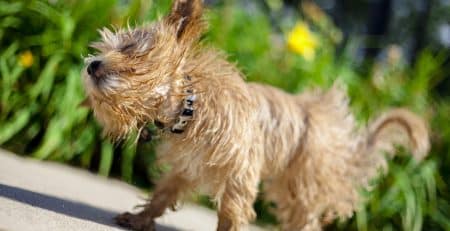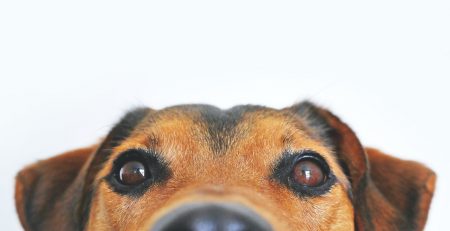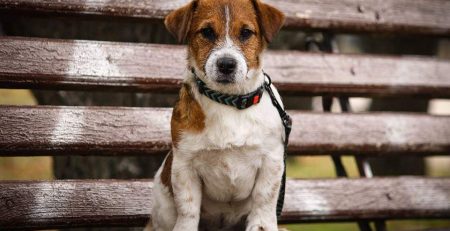Swedish Dog Breeds
Sweden: a land of beautiful beaches, lush forests, and at least 10 different dog breeds! Sweden can boast several different dog breeds, from farm dogs to hunters and beloved companion animals.
As the name suggests, this breed started out in Denmark and southern Sweden, but soon became popular all over Scandinavia. This medium-sized dog is compact, with a small triangular head. The coat is predominately white, with a few coloured patches. The tail varies in length, and may be any length between full or bobbed. The Danish-Swedish Farm dog is easy-going and loving, which makes it both a brilliant pet and excellent working dog. They are great at ratting, and their agility makes them suited for canine sports such as agility, fly-ball, and coursing.
This short-legged dog was, believe it or not, bred to hunt deer! This short-haired dog has a long body and short little legs, with floppy ears and a long tail. The Drever was used for hunting roe deer, but could also hunt red deer, foxes, and hares. This small hound is very healthy and hardy. Unfortunately the breed has not gained much international recognition, though the Drever is recognised by the CKC and UKC.
Called the Hälleforshund in Swedish, the Hällefors Elkhound is descended from ancient wolf-dog hybrids found in northern Scandinavia. This Spitz-type dog was developed in Svealand, but despite its name, the breed did not originate in Hällefors. The breed actually began in Frederiksborg village. They were used for hunting deer. Despite the breed’s ancient ancestors, the Hälleforshund was only recognised by the Swedish Kennel Club in 2000.
Named for Count Adolf Hamilton, founder of the Swedish Kennel Club, the Hamiltonstövare is descended from the English Foxhound, the Harrier, and several German hounds. Also called the Swedish Foxhound or Hamilton Hound, Hamiltonstövares have a distinctive white blaze on the head, white continues down the neck. They also have four white paws, and a white-tipped tail, and the rest of the coat is black and brown. Although similar in appearance to the English Foxhound, the Hamiltonstövare has a comparatively lighter build.
These dogs tend to be sweet natured and diligent in the hunting field, but make equally good pets. They have independent spirits, and may sometimes do as they wish rather than listen to their owners!
Descended from ancient wolf-dog hybrids, the Jämthund is a born hunter, and one of the few dog breeds that will not back away from a bear. Also known as the Swedish Elkhound or Moosehound, this dog has a curly tail and a wolfish appearance, and is of a medium to large size. Affectionate with family and a quick learner, the Jämthund needs plenty of exercise, mental stimulation, and grooming,but will reward its humans with its courage and affection.
This Spitz-type dog is a popular pet, but was actually bred for farm work and hunting. This breed’s forebears could tackle prey as large as a moose, but the Norrbottenspets more commonly kept for hunting game birds, squirrels, and foxes. The Norrbottenspets became very rare after the First World War, but enthusiasts were able to save the breed. The Norrbottenspets is a small and lightly built dog, with a dense double coat that is mostly white, with some reddish markings.
Called the Schiller Hound in English, this scent hound was bred in the late 19th century for hunting hares and foxes. These black and tan hounds are still used for hunting today, and are on the whole very healthy, hardy animals.
The Smaland Hound is one of Sweden’s oldest breeds. This black and tan breed is very rare, even in Sweden where only around 60 puppies are registered annually. Originating in Southern Sweden, the Smaland Hound is descended from Spitz-type dogs and imported hounds, and was bred to hunt. This intelligent, energetic breed is a very skilled hunter, and has been used to hunt everything from squirrels to moose.
This Spitz-type dog’s ancestors guarded and herded the Sami people’s reindeer, but was also an excellent hunting dog. The modern Swedish Lapphund is a very versatile breed. These beautiful dogs make great pets, but can turn their paw to just about anything: herding, farm work, hunting, canine agility, tracking, and more!
“Vallhund” means herding dog in Swedish, and indeed, this dog was bred to herd sheep and cattle. The breed came very close to extinction in the 1940s but was fortunately preserved and revived. These dogs are small but sturdy, with a wedge-shaped head and upright ears. Interestingly, Vallhund pups may be born with a normal tail, a bobbed tail, or no tail at all.
- Sadly extinct
The Dalbo dog was a Molosser type of dog that was used to protect livestock from wild predators, such as wolves and bears. They were large and courageous dogs, with long furry coats to protect them from the elements.
The breed went extinct around 1870, though it was never particularly common throughout Sweden. The death of the Dalbo can be linked to the near extinction of wolves and bears in Sweden in the late 19th century. The lack of wild predators meant that the Dalbo was out of a job, and many people considered them too large and expensive to keep. Rabies and famine may also have contributed to the extinction of the Dalbo.
Today, there have been some attempts to reconstruct the Dalbo breed. There have been some promising results, though as yet a breed standard has not been given.
Want to check out more dog breeds from around the world? This article can tell you all about the dog breeds of the emerald isle.





















